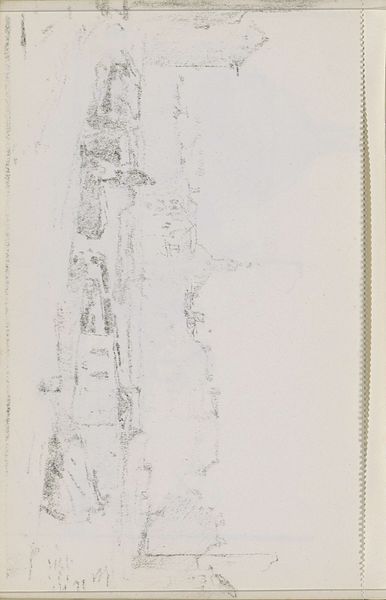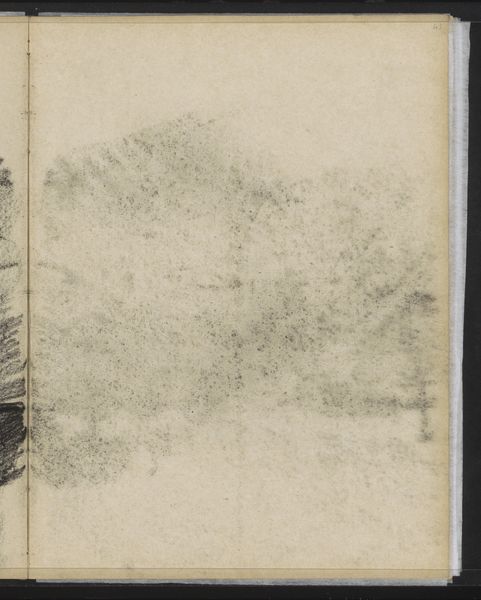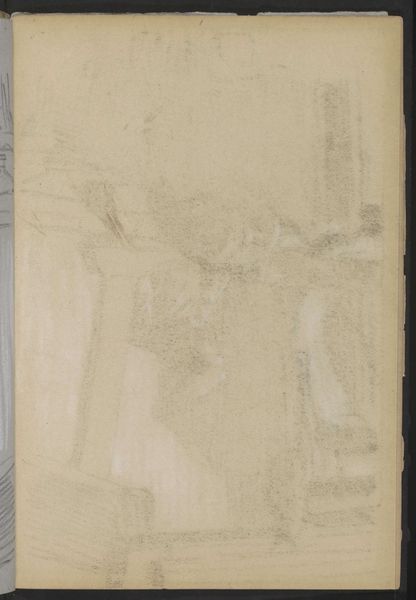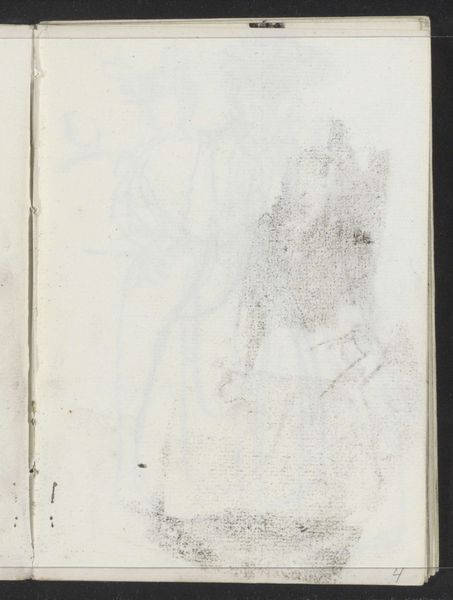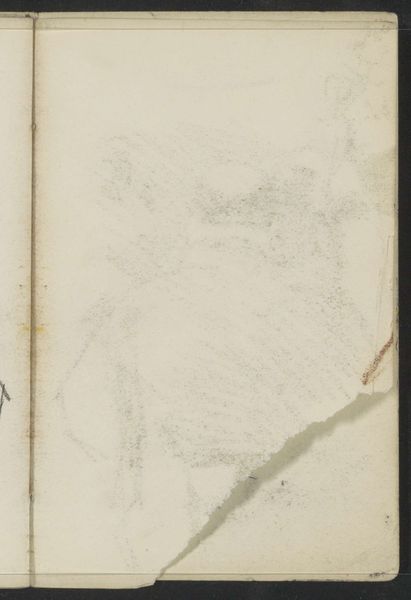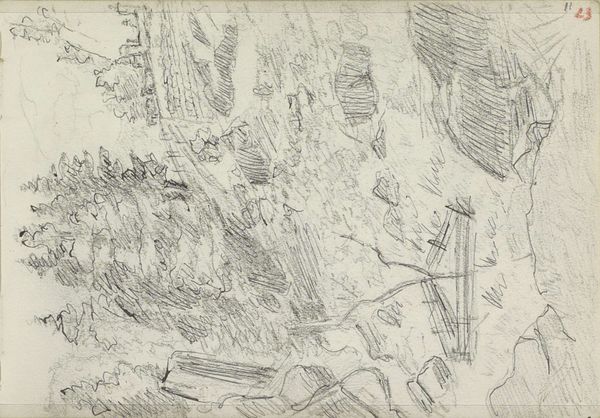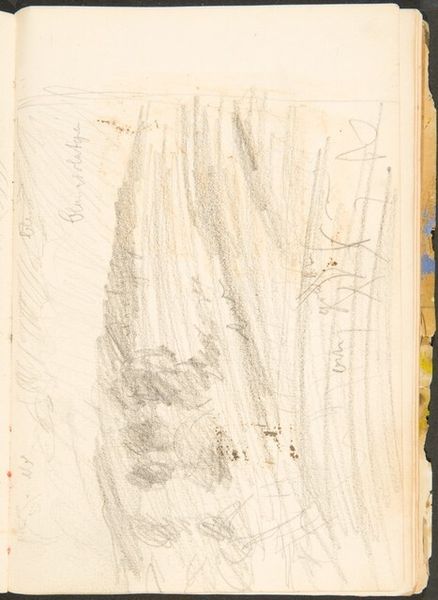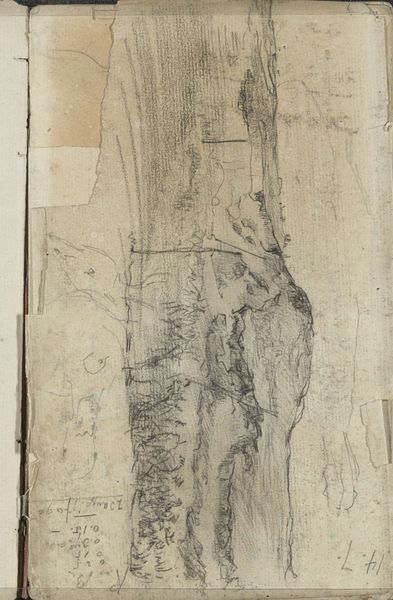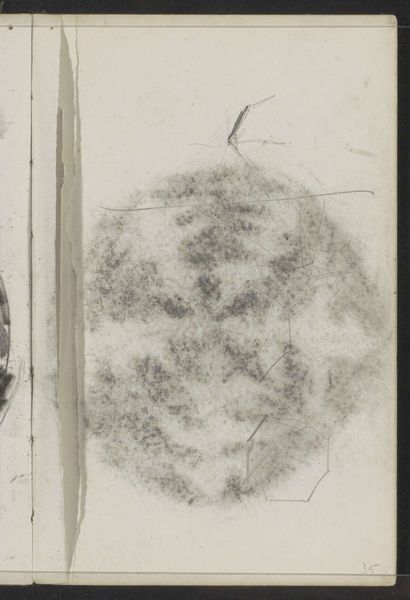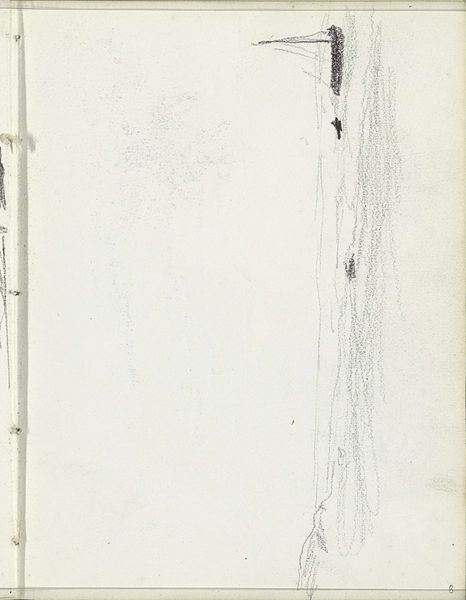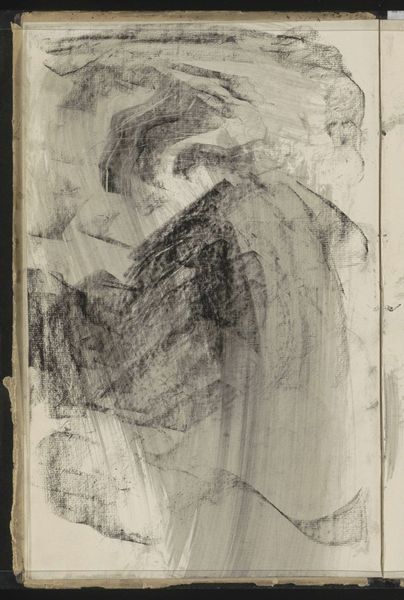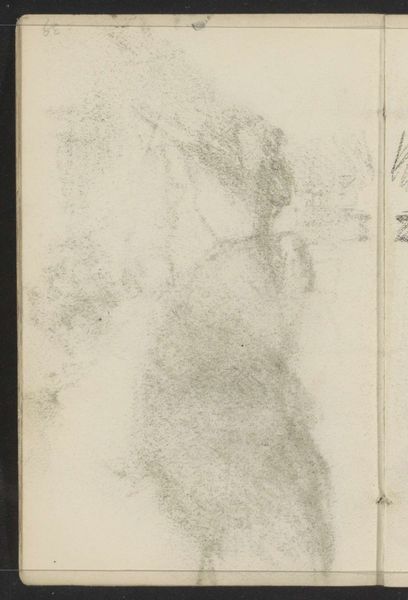
Copyright: Rijks Museum: Open Domain
Editor: So this is "Abklatsch van de krijttekening op blad 4 verso" by Isaac Israels, dating from somewhere between 1875 and 1934. It’s a drawing in graphite and possibly chalk on paper, currently held at the Rijksmuseum. It strikes me as a very quick, almost ghostly sketch. What do you see in this piece? Curator: The sketch captures a specific moment in time. The medium, graphite on paper, lends itself well to quick impressions, typical of the Impressionist movement Israels associated with. It appears that these are figural studies, perhaps made in preparation for a larger composition. What is interesting to me, historically, is considering the role these sketches played within Israels’ larger body of work and within the art market of the time. These were the studies of the masters - do you think that in sketching those masters' methods helped form a new public image for Israels, one tied to history and traditional fine arts? Editor: That's an interesting idea! I hadn't considered how these studies might be tied to the artist's professional persona. Were sketchbooks like this commonly exhibited, or were they more of a private practice? Curator: That is precisely the point! In the late 19th and early 20th centuries, sketchbooks were increasingly viewed as having artistic merit in themselves, particularly when connected to established artistic traditions. The art market saw an increased desire for these kinds of primary works. Exhibiting or selling these sketches connected the artist back to a fine-art tradition of mastery, and boosted Israels' image beyond pure modernism. So in a way, the image-politics play into who Israel became and how successful they were during this time. Editor: That makes perfect sense. It reframes the whole sketch for me. Curator: Yes, the drawing offers us insights into the public perception of the artists! Thank you for the close look at it. Editor: Likewise!
Comments
No comments
Be the first to comment and join the conversation on the ultimate creative platform.
